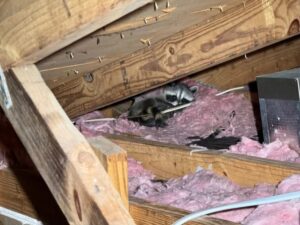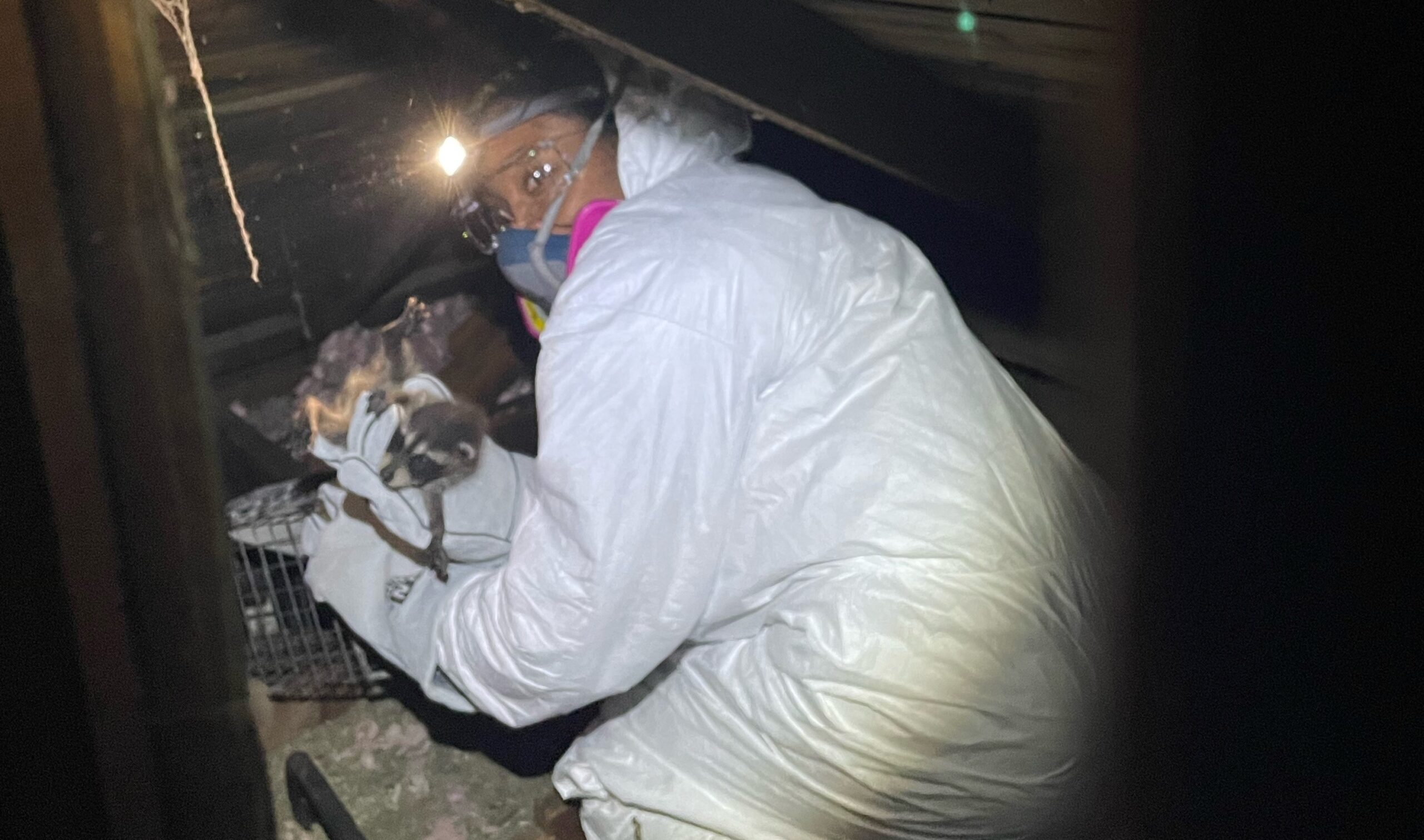Raccoons in the Attic
 While coming across a raccoon or two in your attic can be unsettling, it’s an occurrence that’s becoming increasingly common in the Dallas area. As our city grows, raccoons continue to become attracted to the shelter and easy access to food that an attic provides.
While coming across a raccoon or two in your attic can be unsettling, it’s an occurrence that’s becoming increasingly common in the Dallas area. As our city grows, raccoons continue to become attracted to the shelter and easy access to food that an attic provides.
Raccoon removal may seem like a daunting job to undertake, but the experts at Critter Control® in Dallas are ready to make your raccoon problems a thing of the past. In addition to being experienced in removing nuisance wildlife from attics all over Dallas, our technicians are also able to repair any damage the critters may have caused during their stay.
Signs of Raccoons in the Attic
- Loud noises, especially at night
- Raccoon feces
- Musty, ammonia-like odor
- Visible tracks or pawprints
- Damaged or torn insulation
- Nesting materials in corner or near HVAC systems
- Damages to wiring or duct systems
- Stains on ceiling
How Do Raccoons Get Inside the Attic?
Raccoons can get into your attic from a variety of entry points. They will either find an existing entry hole or create their own. They don’t even need a large hole. For an animal that can be as large as twenty pounds, raccoons only need a gap the size of a grapefruit. Raccoons are excellent climbers and can gain access via an overhanging tree limb, a downspout, or the siding of the house.
Common Entry Points Raccoons Use to Get Inside the Attic:
- Roof Ridge
- Shingles
- Fascia Boards on roof edge
- Soffits and eaves
- Roof Vents
Raccoon Damage in Attic
Raccoon damage in the attic can be expansive and expensive. Damage caused by raccoons in the attic includes building dens and creating latrine sites. Both activities destroy the attic’s insulation.
Mother raccoons enter attics because they are safe places to give birth. The females use insulation and other materials to create a nest for the baby raccoons.
Health Risks of a Raccoon Infestation
A raccoon family, while cute, poses a health risk to you and your family. They designate a latrine site in your attic for feces and urine. Their droppings are breeding grounds for raccoon roundworm. Ectoparasites like fleas and ticks can infest your home. The fleas and ticks can find their way to you and your family.
How NOT To Get Rid of Raccoons in the Attic
Repellents are not effective. Raccoons will eventually get used to bright lights or loud music. Mothballs are dangerous and ineffective. The only exception is raccoon eviction fluid, which only works if a mother raccoon has a nest of young raccoons in your attic.
We do not recommend that homeowners attempt raccoon removal. Raccoons can become quite aggressive if they feel cornered or threatened, putting you and your family in danger.
In addition to bites and scratches, raccoons are known to carry infectious diseases like:
- Parvovirus
- Rabies
- Roundworm
- Toxoplasmosis
- Infectious Canine Hepatitis
Raccoon Removal Services in Dallas, TX

If you have been hearing scratching sounds from your attic and think you may have raccoons in the attic, do not call the local animal control.
When you call us to address a raccoon problem, we first inspect your home to determine where the critters are entering and how many have made their way into your attic. Once we’ve assessed the situation, we humanely trap the raccoons and remove them. After we ensure the raccoons are gone, we clean up the attic and replace damage insulation. The final step in raccoon control is exclusion services. We seal any current raccoon entry points and strengthen any potential spots.
With over 30 years of experience in animal removal, Critter Control® Dallas is well equipped to handle any raccoon issues you may have. If you suspect that raccoons have taken up residence in your attic, give us a call today for your free home inspection at (214) 225-2217 or fill out a Contact Us form .




